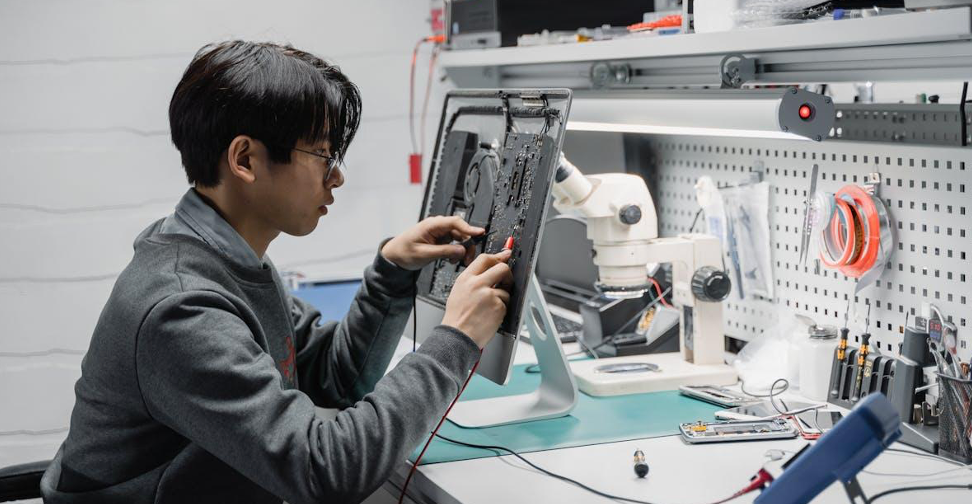What Modern Businesses Can Learn From Circular Economy Principles
- Danielle Trigg

- 15 minutes ago
- 4 min read

In today's fast-paced business environment, we face significant challenges, from resource scarcity to climate change. One inspiring solution is the concept of a circular economy. Reimagining how we create, consume, and recycle opens up pathways not only for sustainability but also for innovation and profitability. Practical examples of this approach can even be seen in everyday industries, understanding processes such as what type of antifreeze does my car need highlights how proper maintenance and responsible product choices contribute to resource efficiency and waste reduction.
In this text, we investigate deeply into the circular economy principles and unveil how they can revolutionize our approach to business. If you're curious about the wider implications and frameworks, we invite you to explore resources such as those from the Ellen MacArthur Foundation, a leading authority on circular economy practices and strategies.
Understanding Circular Economy Principles
The circular economy is an economic system aimed at eliminating waste and the continual use of resources. Unlike the traditional linear economy, which follows a take-make-dispose model, the circular economy emphasizes restoring and regenerating resources by rethinking product life cycles.
Core Concepts
Central to this model are key concepts such as:
● Resource Efficiency: Utilizing materials in a manner that minimizes waste and maximizes utility.
● Product Life Extension: Designing products to last longer, facilitating easier repairs, and promoting refurbishment.
● Closed Loop Systems: Creating processes where waste is reused as a resource for new products.
By understanding these principles, businesses can begin to uncover opportunities in resource utilization, cost savings, and risk management.
The Importance of Sustainability in Business
As we navigate the complexities of modern business, the pressure to adopt sustainable practices is more pronounced than ever. Consumers are increasingly aware of environmental issues and are making purchasing decisions aligned with their values. Companies that prioritize sustainability can benefit not only from enhanced brand loyalty but also from improved operational efficiencies.
Economic Benefits
Implementing sustainable practices can lead to significant cost reductions through energy savings, reduced material costs, and efficiency gains. For instance, according to a report by the World Economic Forum, integrating sustainability into business strategies can yield substantial ROI, positioning us better in a competitive market.
Social Responsibility
Also, adopting sustainability practices illustrates our commitment to corporate social responsibility, enhancing our reputation and fostering trust with stakeholders and consumers alike. Our position not only becomes more desirable to environmentally-conscious customers but also attracts talent who want to work for responsible companies.
Key Benefits of Adopting Circular Economy Practices
Transitioning to circular economy principles offers numerous benefits that extend beyond waste reduction. Here are some key advantages:
● Cost Savings: Improved resource efficiency leads directly to cost reduction. By utilizing materials more effectively and reducing waste, we can significantly lower operational costs.
● Innovation: A shift to circular practices encourages creativity in product design and business models. This innovation can result in the development of new products and services that appeal to modern consumers.
● Market Differentiation: Brands that adopt circular practices can differentiate themselves in saturated markets. By positioning ourselves as leaders in sustainability, we enhance our market appeal.
● Resilience Against Supply Chain Disruptions: In a circular economy, we rely less on virgin materials. This makes us more resilient against fluctuations in supply and prices.
Conclusion
Eventually, these benefits translate into improved bottom lines. By recognizing the financial and reputational upsides, we can drive our businesses forward.
Examples of Circular Economy in Action
Across the globe, numerous companies exemplify the success of circular economy principles:
● Patagonia: This outdoor wear company is renowned for its commitment to sustainability, offering repairs and recycling programs that extend the life of its products.
● IKEA: The furniture giant is transitioning towards a circular model by using renewable and recycled materials in its products and planning to make all of its products recyclable by 2030.
● Unilever: With initiatives designed to reduce plastic waste, Unilever's commitment to sustainability embodies the circular economy's foundational principles.
Learning from Leaders
By studying these examples, we can glean actionable strategies for our own operations, seeing firsthand how these principles can be applied effectively.
Strategies for Implementing Circular Economy Principles
To effectively integrate circular economy principles into our business, here are several strategies we can adopt:
● Rethink Product Design: Innovate around durability, repairability, and recyclability while keeping consumer needs at the forefront.
● Engage Stakeholders: Collaborate with suppliers and consumers to create a cohesive approach to resource management and product lifecycle.
● Invest in Technology: Use technology for efficient resource tracking and data analysis to understand consumption patterns and waste management better.
● Educate and Train Employees: Foster a culture of sustainability within our organization by training staff on circular economy principles.
Challenges and Solutions in Transitioning to a Circular Economy
While transitioning to a circular economy offers many benefits, we also face obstacles, such as:
● Inadequate Infrastructure: Some regions lack the necessary infrastructure to support recycling or circular initiatives. We can partner with local governments and organizations to foster development.
● Cultural Resistance: Shifting mindsets within organizations can be difficult. Implementing training sessions and case studies can help ease this transition.
● Higher Initial Costs: The upfront investment in sustainable materials or processes can be daunting. But, we should view these costs as long-term investments in our brand and operational efficiency.
Strategic Solutions
By acknowledging these challenges, we can proactively develop strategies that allow us to embrace the circular economy successfully.
















